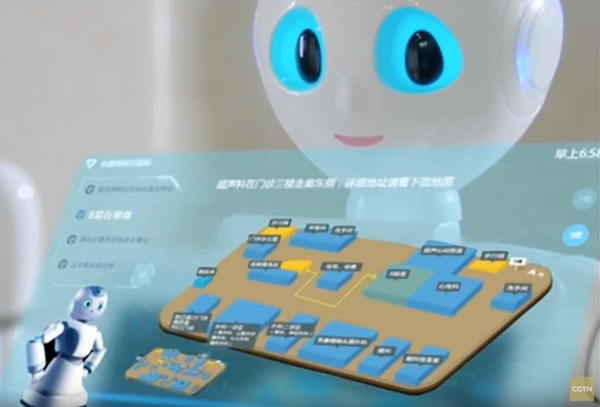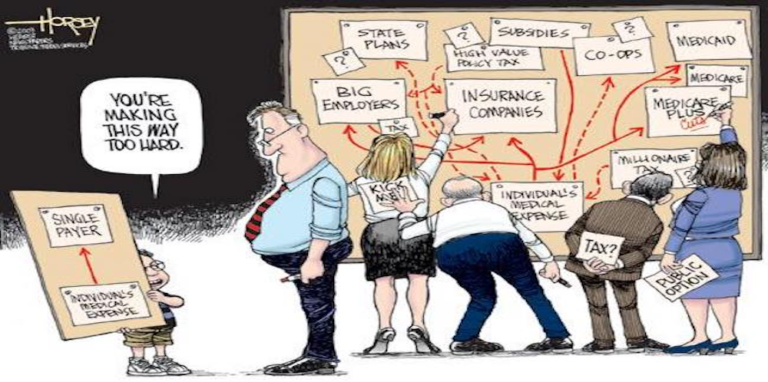Robot MD and the Future of Healthcare

Would you go to a Robot MD?
Xiaoyi is a Chinese robot doctor that just made history as the first machine to pass a medical licensing exam. That feat signals a future that’s increasingly reliant on artificial intelligence (AI) and other technologies driven by Moore’s Law.
Named after Intel co-founder Gordon Moore, Moore’s Law describes an observed trend of computer circuits and components getting exponentially smaller, faster and cheaper over time. Extrapolating this trend is one way that futurists make predictions, like those I made in Moore’s Law and The Future of Healthcare.
IBM Watson was an early example of AI outperforming humans when it beat two expert players in the game of Jeopardy years ago. Since then, IBM has applied the Watson supercomputer and its AI capabilities to healthcare and medical research, but only as a tool to help doctors be more efficient. Neither IBM nor iFlytek, the Chinese company behind Xiaoyl, position their systems as replacing doctors.
“We will officially launch the robot in March 2018. It is not meant to replace doctors. Instead, it is to promote better people-machine cooperation so as to boost efficiency,” iFlytek chairman Liu Qingfeng told China Daily. But I think smart robots could eventually replace doctors, or much of what they do today.
Healthcare Moves Down-Market to Consumers
There’s already a growing shortage of primary care physicians to care for people as world populations age and people live longer. Two major trends will address that need. One is telehealth video calls that allow remote physician services to care for people in distant locations, even across state lines, time zones, and international borders. The other trend is medical devices and imaging getting cheaper, smaller, more accurate, and easier to use. This will enable more medical functions to move down-market from doctors in hospitals and clinics, to physician assistants, nurse practitioners, nurses, and even consumers at home. As the trends merge, services will be able to access and monitor the consumer’s devices remotely and in real-time. That gives doctors insight and context into changing health conditions and what’s affecting them (nutrition, exercise, sleep, etc.). And as the technologies evolve, I see less need for doctors in those medical services at all, or at least not doing what they do now.
The claim that robots are taking our jobs has become so commonplace lately that it’s become a cliché. Nonetheless, there’s a strong element of truth to it, as presented in Automation, Robots and the Pink Collar Future. Automated machines have taken away “blue collar” factory jobs for years, and they’re not also taking the jobs of “grey collar” service workers and even “white collar” knowledge workers. Stories of digital lawyers, journalists and surgeons amplify the fear that robots really are taking over the workplace. And online education systems like the Khan Academy show how quickly university-level learning can be done without direct human contact. Interestingly, jobs that need creativity, empathy and “emotional intelligence” are harder to automate. I call these “pink collar” jobs, because women mostly do them.
AI and robots are already gaining mass-market appeal and moving down-market to consumers, but in slightly different forms. Rather than manufacturing robots for the home, we see Roomba vacuums and robot lawn mowers. And instead of having to go to a library for answers, we can now just ask our virtual assistant. Apple Siri, Amazon Alexa, and Google Home are fighting for dominance in this space. I wonder who will fight for and dominate home healthcare robots and medical devices.


RELATED ARTICLES:
AI could help solve the world’s health care problems at scale (VentureBeat) “In a world with limited doctors, emerging diseases and superbugs, and sharply rising costs, how can we successfully tackle health care…”
NVIDIA’s AI will help GE speed up medical image processing (Engadget) COMMENT: Better (and more expensive) medical imaging in hospitals is one thing. Better, cheaper, more accurate, and easier to use medical devices in the hands of consumers at home is another. One promises to increase overall healthcare costs and benefit a few. The other promises to dramatically lower costs and benefit many. I’m not against innovation anywhere, but you can guess my priorities.
Amazon, Walmart and Best Buy quietly entered Healthcare market to disrupt an industry resisting change. The big winner? Consumers. (Inc. September 2019) I COMMENTED:
3 must-haves to hit telehealth’s tipping point (AMA December 2019)